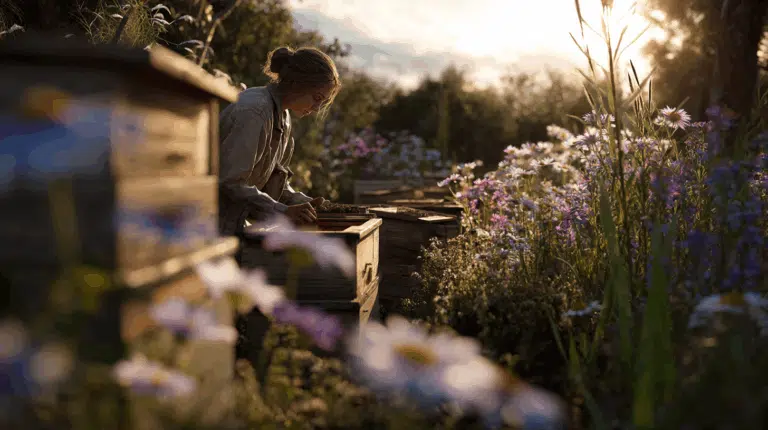Een opvallende plant met lange, hangende of recht opstaande trossen. Geschikt voor borders maar vooral gebruikt als snijbloem, geeft hij een tropisch accent en prachtige textuur aan boeketten.
Met Amaranthus zaden van EasySeeds.eu geef je je tuin, border of terras een uniek en tropisch accent. Maar vooral bekend als snijbloem in boeketten. Amaranthus is een bijzondere perkplant die opvalt door zijn lange, sierlijke bloemen en opvallende bladkleuren. Amaranthus uit zaad zaaien biedt tuiniers de vrijheid om borders, potten en bakken te vullen met planten die van het late voorjaar tot de eerste vorst een opvallende en decoratieve uitstraling geven.
Unieke bloemen en bladkleuren
Amaranthus produceert lange, hangende bloemaren in rood, roze, geel of groen en vaak opvallend gekleurd blad. Deze unieke vormen en tinten maken de plant tot een eyecatcher in elke border, pot of tuinontwerp.
Langdurige bloei en onderhoudsvriendelijk
Amaranthus bloeit langdurig van midden zomer tot de eerste vorst en is eenvoudig te verzorgen. Het is een ideale plant voor zowel beginnende als ervaren tuiniers die een opvallend accent in hun tuin willen.
Bijvriendelijk en ecologisch
De bloemen trekken bestuivers zoals bijen en vlinders aan, wat bijdraagt aan biodiversiteit en een gezonde tuinomgeving.
Borders & perken – Gebruik Amaranthus voor hoogteaccenten en om een speels en tropisch effect in je tuin te creëren.
Potten & bakken – Hangende soorten Amaranthus zijn ideaal voor potten, bloembakken en hanging baskets, waardoor ze een prachtig draperend effect geven.
Combinaties met andere perkplanten – Combineer met Zinnia, Tagetes of Petunia voor een kleurrijk en dynamisch borderontwerp.
Snijbloemen en decoratie – De lange, stevige bloemaren zijn uitstekend geschikt voor droogbloemen en bloemstukken binnenshuis.
Zaaitijd – Zaai binnenshuis van maart tot april of direct buiten na de laatste vorst voor een optimale start.
Grond & standplaats – Gebruik goed doorlatende zaaigrond en kies een zonnige locatie voor maximale groei en bloei.
Verzorging – Houd de grond vochtig tijdens kiemen en eerste groeifase; geef regelmatig voeding om sterke, gezonde planten te krijgen.
Uitharden – Laat jonge planten langzaam wennen aan buitenomstandigheden voordat ze definitief uitgeplant worden.
Onderhoud – Verwijder verwelkte bloemen om de bloei te verlengen en de planten in optimale conditie te houden.
Bij EasySeeds.eu vind je een uitgebreid assortiment Amaranthus zaden, geselecteerd op kiemkracht, kleurvariatie en bloei-intensiteit. Of je nu borders wilt vullen, potten wilt verfraaien of droogbloemen wilt maken – onze Amaranthus zaden helpen je tuin elk seizoen tot leven te brengen.
🌾 Ontdek nu ons assortiment en bestel eenvoudig online – Amaranthus zaden kopen doe je bij EasySeeds.eu!

Amartanthus caudatus: lange, hangende bloemtrossen in rood, paars of groen. Hoogte: 60–120 cm.
Amaranthus cruentes: rechtopstaande pluimen in karmijnrood, oranje of goud. Gebruik: zowel sierplant als graanamarant (zaden eetbaar).
Amaranthus tricolor: rechtopstaande pluimen in karmijnrood, oranje of goud. Gebruik als sierplant.
Amaranthus hypochondriacus: rechtopstaande, dichte pluimen in paars, rood of roze. Gebruik: sierplant en snijbloem.
Voor grootschalige teelt wordt ongeveer 1–2 kg Amaranthus-zaden per hectare aanbevolen, afhankelijk van de variëteit en de gewenste plantdichtheid.
Beide! Sommige soorten worden geteeld voor hun decoratieve bloemen, andere voor hun eetbare bladeren en zaden.
Amaranthus-zaden moeten in het late voorjaar worden gezaaid, wanneer de bodemtemperatuur minstens 15°C bedraagt en het risico op vorst voorbij is. Dit zorgt voor een optimale kieming en groei.
De zaden ontkiemen meestal binnen 5–10 dagen bij temperaturen rond de 20–25°C.